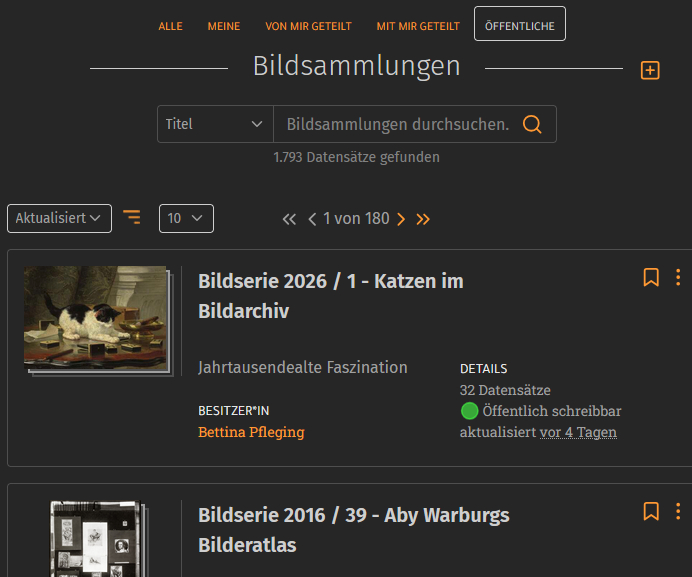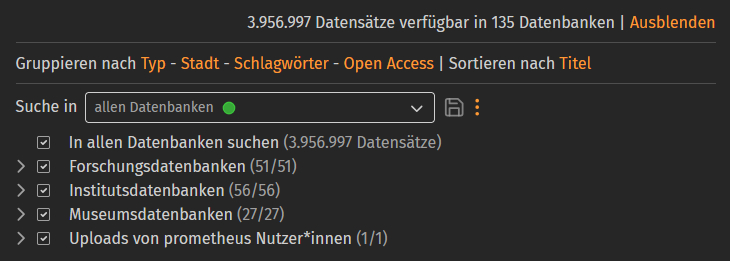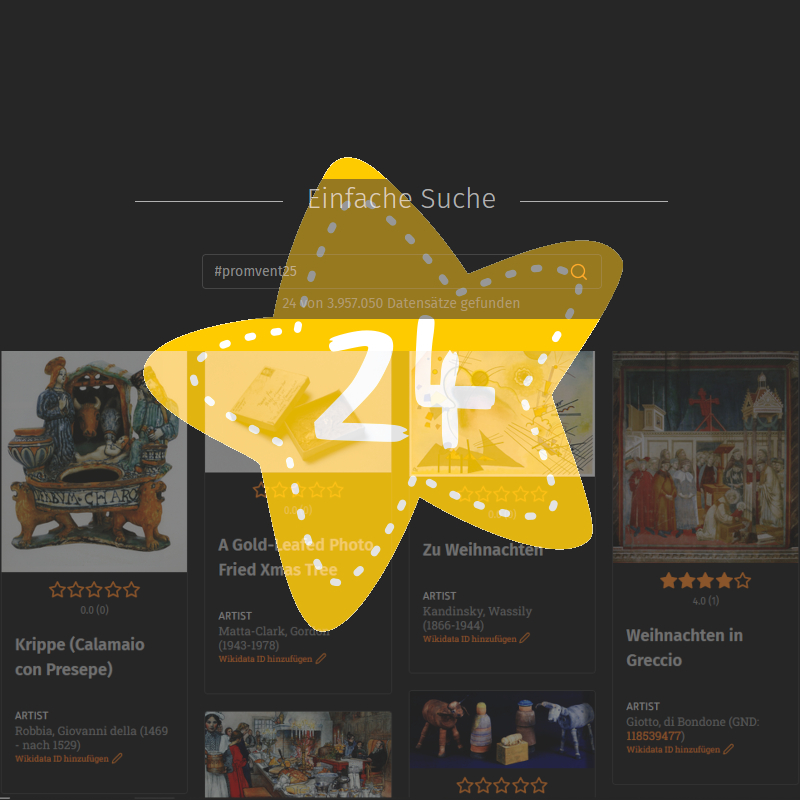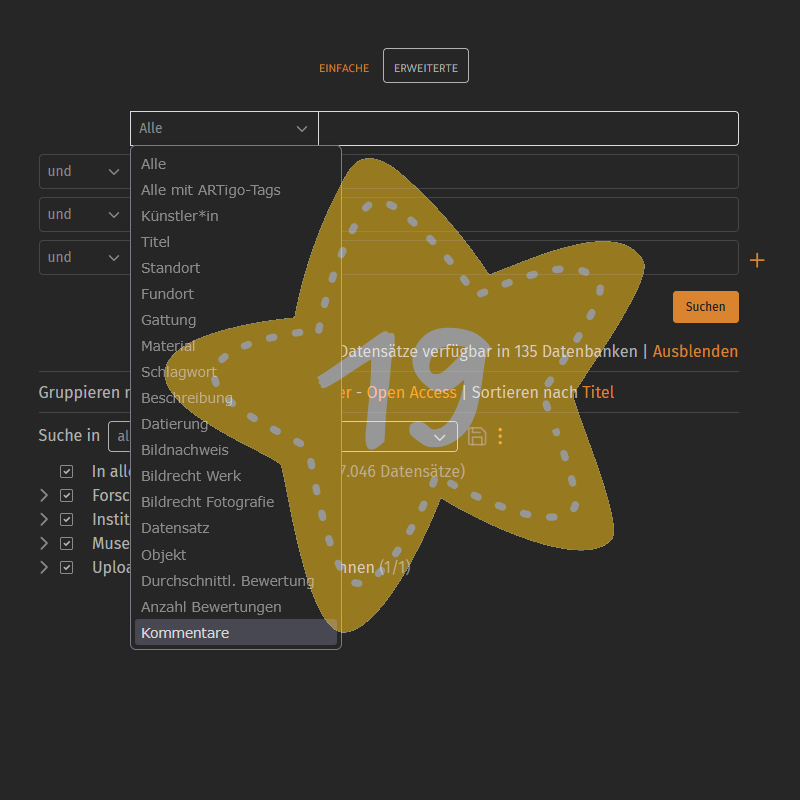Blog

As every year, in our first newsletter of the year we’re exploring your search terms in the image archive this time as well. Which artists have you searched for most often? Here are your top 20:
1. Caspar David Friedrich
2. Pablo Picasso
3. Vincent van Gogh
4. Salvador Dalí
5. Cindy Sherman
6. Hannah Höch
7. Gabriele Münter
8. Kurt Schwitters
9. Daumier
10. Frida Kahlo
11. Paul Klee
12. Wolfgang Tillmans
13. Caravaggio
14. Claude Monet
15. Paula Modersohn-Becker
16. Edward Hopper
17. Gerhard Richter
18. Rebecca Horn
19. Artemisia Gentileschi
20. Andy Warhol
There’s a new order at the top. Last year Andy Warhol was number 1. This time he just barely made it into the top 20. Caspar David Friedrich has moved up from second to first place and Pablo Picasso from 3rd to 2nd. New this year are Kurt Schwitters, Daumier, Paul Klee, Wolfgang Tilmans, Claude Monet, Paula Modersohn-Becker, Edward Hopper and Rebecca Horn, and no longer included are Giotto, René Magritte, Max Ernst, Otto Dix, Hilma af Klint, Wassily Kandinsky, Albrecht Dürer and Roy Lichtenstein.
Other 2025 rankings of artists do not reflect the search behavior of a group. Instead, they employ different criteria and evaluations. The “Art Compass” (ger. “Kunstkompass”) is compiled annually by journalist Linde Rohr-Bongard and published in a magazine called “Capital”. Its evaluation and point system considers factors such as exhibitions of more than 300 museums, reviews in specialist journals, acquisitions by leading museums, and awards. This ranking continues to top Gerhard Richter as the world’s most important artist.
Of the currently 51,085 image collections in prometheus, 1,793 image collections are public. This means that they can be seen by everyone who has access to the image archive and, in some cases, can also be edited if the owners of these image collections have activated the “writable” setting. Select “public” and they will be displayed to you, here sorted by “updated on”:
Other sorting options are owner and title.
Now 1,793 image collections are already quite a lot, which are not easy to search from front to back in 10, 20, 40 or 100 packages to see if there is something interesting for you. Therefore, you can also search by different categories, such titles as “Maria” (18 hits), by description such as “Maria” (2 hits) or by keywords like the German word for Christmas,“Weihnachten” (16 hits).
By the way, if you click on one of the keywords that has been assigned to an image collection, you will be shown all image collections that have been tagged with this term.
You know prometheus combines a large number of different databases under one interface, don’t you? By default, your search term will be searched in all image databases (green dot).
In the advanced search, you can also choose whether you want to search institute, museum or research databases, the upload databases of prometheus users, in combinations or only include individual image databases.
At the suggestion of your ranks, we have now integrated a new feature. You can save your special selection of image databases and select it in your subsequent sessions or set it as your default, you can rename or delete the selection again.
We wish you a relaxing Christmas holiday and an inspiring New Year, in which we are particularly looking forward to the anniversary conference in October celebrating our 25th birthday: ‘Out of Frame’.
We have tagged our Christmas selection of 24 images for you with the comment ‘#promvent25’, and if you search for this tag now, these images will be displayed. This is because the comments are integrated directly into the search index. Of course, we could have simply created an image collection, but we wanted to introduce this feature to you once again. You can add other comments to the image, such as missing dates and locations or other titles of works, thereby contributing your own expertise or benefiting from the expertise of others.
To give you an idea of how large or small the works and objects depicted are, we have integrated a display of the dimensions directly into the image in prometheus. For all images where the height and width are specified in the metadata in the ‘Dimensions’ field, the additional visualisation is visible in the detailed view of the image.
In our example, Otto Dill. Kälbchen, um 1910, Aquarellierte Kohlezeichnung (Otto Dill. Calf, ca. 1910, watercolour charcoal drawing), the dimensions are 23 × 23 cm.
With his Mnemosyne image atlas, Aby Warburg sought to reconstruct the visual memory of European culture from 1924 onwards. The image atlas plates have only survived in the form of photographs.
Plate 22 of the image atlas deals with the theme of ‘The Flight’ and how the motif has lived on and been reinterpreted throughout different eras.
Further plates are available in prometheus in the public image collection ‘Aby Warburg’s Picture Atlas. Network of Images and Relations’ and for everyone outside the image archive, further information is available in the image series from week 39 in 2016.
An advanced search for the date ‘21’ returns 4,048 of 3,957,049 records.
Sorted by date, the results show information about the photo such as ‘(Photo: 1956-09-21)’, dates such as ‘02/21/1892’ or ‘5th century BC, 20th century AD, 21st century AD’ and even ‘around 1920/21’.
We can also use the date filter here: ‘between 2021 and 2021’:
9 out of 3,957,049 records from three different image databases, with the following information in the date field: ‘20th-21st century’, ‘21st century’ and ‘21st century’.
On 1 April 2021, prometheus celebrated its 20th anniversary, with 110 image databases, over 2.7 million images and 172 institutions. An anniversary conference was also held in the autumn, online for the first time. A publication on ‘4D – Dimensions – Disciplines – Digitality – Data’ has been produced, with contributions appearing successively and still to be published:
Dieckmann, Lisa et al. (Hrsg.): 4D: Dimensionen | Disziplinen | Digitalität | Daten, Heidelberg: arthistoricum.net, 2022 (Computing in Art and Architecture, Band 6).
https://doi.org/10.11588/arthistoricum.1100
In the advanced search, you can search in 19 categories, starting with ‘all’ (1) as in the simple search. You can also select
(2) All with ARTigo tags
(3) Artist
(4) Title
(5) Location
(6) Discovery place
(7) Genre
(8) Material
(9) Keyword
(10) Description
(11) Date
(12) Credits
(13) Rights work
(14) Rights reproduction
(15) Record
(16) Record object
(17) Rating average
(18) Rating count
(19) User comments.




















